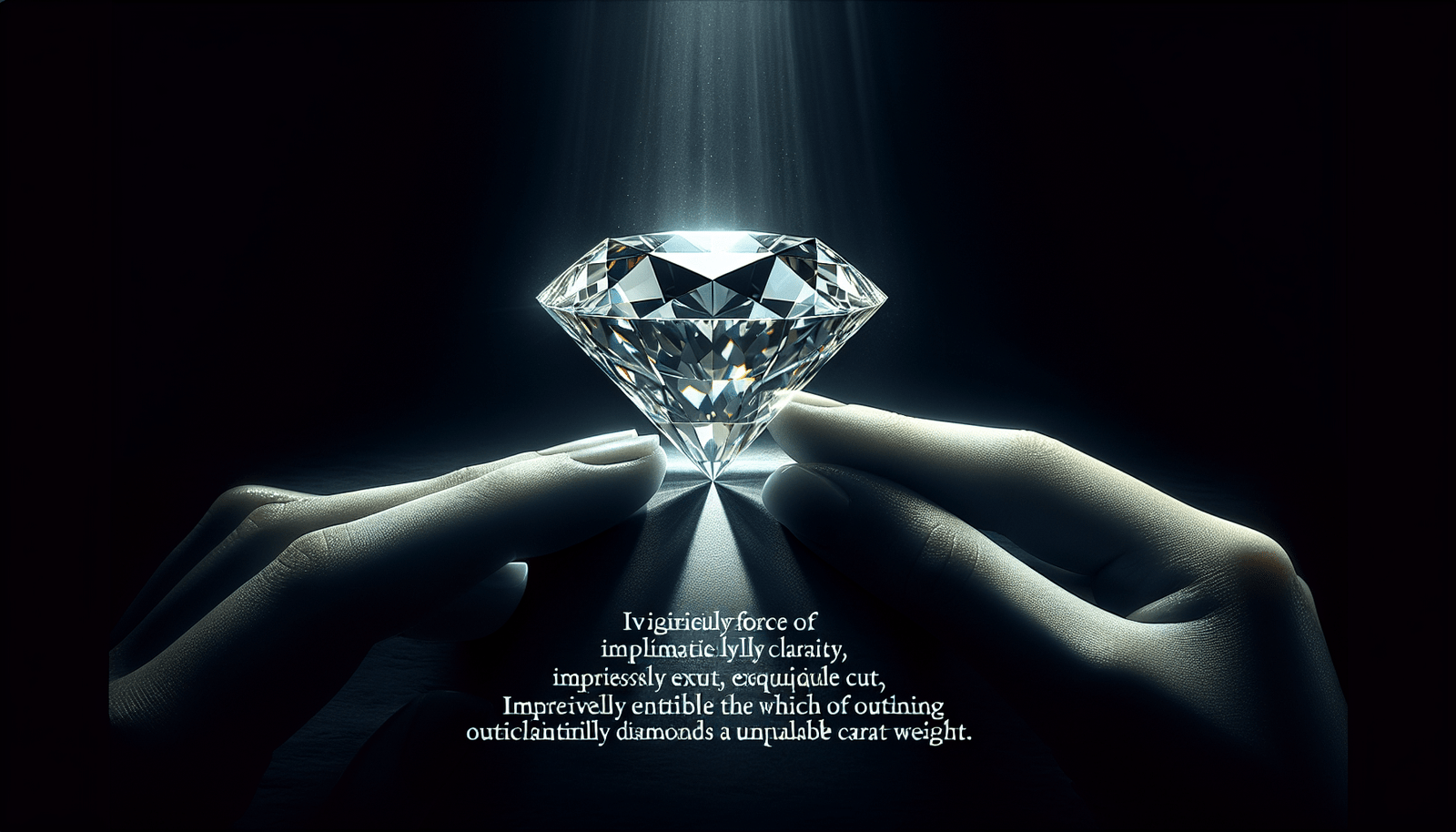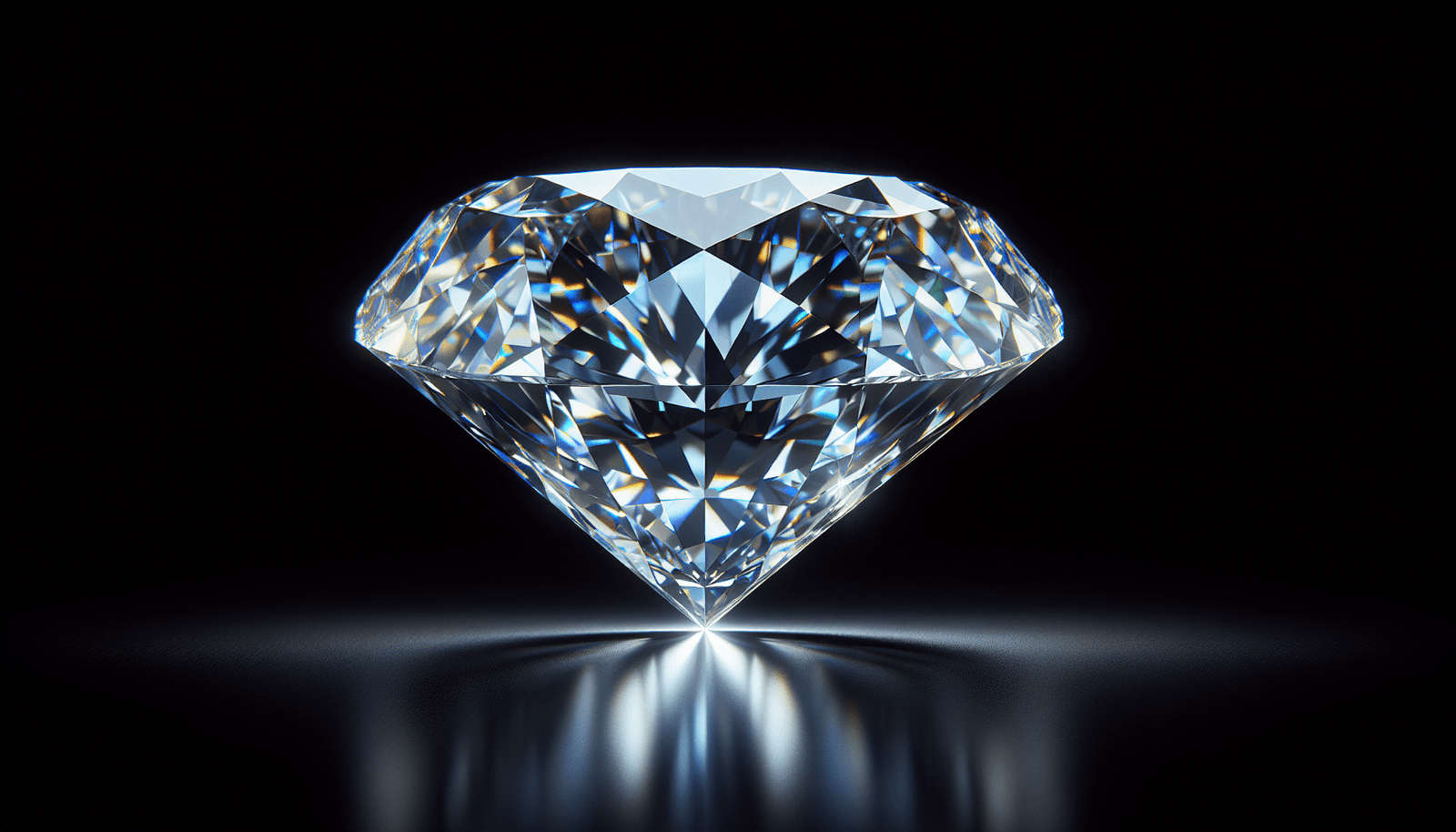How do you define a diamond? This question may seem simple at first, but there’s a lot more to a diamond than meets the eye. Whether you’re shopping for an engagement ring or are just fascinated by these brilliant gemstones, understanding the ins and outs of diamonds is not only interesting but also empowering. By the end of this article, you’ll have a solid foundation on how to define a diamond in the most comprehensive way possible.

What is a Diamond?
The Science Behind Diamonds
Diamonds are more than just sparkling pieces of jewelry; they are the hardest natural substance on Earth. Composed entirely of carbon atoms arranged in a crystal lattice structure, diamonds form under extreme pressure and temperature conditions. The result? A stone that is not only beautiful but also virtually unbreakable.
Natural vs. Synthetic Diamonds
When it comes to defining a diamond, it’s crucial to distinguish between natural and synthetic diamonds. Natural diamonds are formed through geological processes over billions of years, whereas synthetic diamonds are made in a lab. Despite their different origins, synthetic diamonds have the same chemical composition and physical properties as natural diamonds.
| Type | Origin | Chemical Composition | Physical Properties |
|---|---|---|---|
| Natural | Earth’s crust | Carbon | Hardness, brilliance |
| Synthetic | Laboratory | Carbon | Hardness, brilliance |
The Four Cs of Diamonds
Carat Weight
Carat weight is probably the first thing that comes to mind when defining a diamond. It measures the diamond’s size and weight. One carat is equivalent to 200 milligrams. While larger carat weights are often more impressive, they also come with a heftier price tag.
| Carat Size | Approx. Weight (mg) |
|---|---|
| 0.5 carat | 100 mg |
| 1 carat | 200 mg |
| 2 carats | 400 mg |
Cut
The cut of a diamond significantly affects its brilliance and sparkle, making it one of the most important factors in defining a diamond. Unlike the other Cs, which are determined by nature, the cut is dependent on human hands. Expert cutters maximize the light that enters the diamond to enhance its scintillation.
Popular Diamond Cuts
| Cut Type | Description |
|---|---|
| Round | Most popular, maximum brilliance |
| Princess | Square shape, modern and elegant |
| Oval | Elongated shape, makes fingers appear longer |
| Emerald | Rectangular, known for its clarity and sophisticated allure |
Color
Color refers to the natural hue of the diamond, which ranges from completely colorless to various shades of yellow and brown. The Gemological Institute of America (GIA) has a color grading scale from D (colorless) to Z (light color).
| Grade | Description |
|---|---|
| D-F | Colorless |
| G-J | Near Colorless |
| K-M | Faint Color |
| N-Z | Very Light to Light Color |
Clarity
Clarity measures the internal and external imperfections of a diamond. These imperfections, known as inclusions and blemishes, can affect the diamond’s overall appearance and value. The clarity scale ranges from Flawless (no inclusions or blemishes) to Included (inclusions and/or blemishes are visible even to the naked eye).
| Clarity Scale | Description |
|---|---|
| FL | Flawless |
| IF | Internally Flawless |
| VVS1-VVS2 | Very, Very Slightly Included |
| VS1-VS2 | Very Slightly Included |
| SI1-SI2 | Slightly Included |
| I1-I3 | Included, visible imperfections |

Types of Diamonds
Natural Diamonds
The classic choice, natural diamonds are celebrated for their timeless beauty and enduring value. They are extremely rare, which is a significant factor in their high price.
Synthetic Diamonds
Artificially produced yet chemically identical to their natural counterparts, synthetic diamonds are an increasingly popular choice. They’re typically more affordable and are often considered an ethical alternative to natural diamonds.
Treated Diamonds
These diamonds undergo post-mining treatments to improve their appearance. Laser drilling to remove inclusions and fracture-filling to enhance clarity are common practices. While treated diamonds can be a more budget-friendly option, it’s crucial to disclose any treatments during purchasing.
Diamond Simulants
Though not “true” diamonds, simulants like cubic zirconia (CZ) and moissanite mimic the look of a diamond. These materials are much less expensive and can be an excellent choice for those on a budget or those who don’t prioritize the symbolic value of a natural diamond.
Diamond Certification
Importance of Certification
A diamond certificate, also known as a diamond grading report, provides an objective assessment of a diamond’s characteristics. It’s your best bet to know exactly what you’re buying. The most reputable certification bodies include the GIA, American Gem Society (AGS), and International Gemological Institute (IGI).
| Certification Body | Reputation | Trust Level |
|---|---|---|
| GIA | World-renowned | High |
| AGS | Strict protocols | High |
| IGI | Widespread acceptance | Moderate |
Reading a Diamond Certificate
A diamond certificate includes detailed information about the diamond’s 4 Cs and additional characteristics. Understanding how to read and interpret this information is crucial for making an informed purchase.
| Attribute | What It Means |
|---|---|
| Carat Weight | Size and weight of the diamond |
| Cut Grade | Quality of the diamond’s cut |
| Color Grade | Natural hue, color scale from D-Z |
| Clarity Grade | Level of inclusions and blemishes |
| Additional Notes | Fluorescence, measurements, and other specifics |

Ethical Considerations
Conflict-Free Diamonds
In making your purchase, it’s essential to ensure that your diamond is conflict-free. Conflict diamonds, also known as “blood diamonds,” are sourced in war zones and sold to finance armed conflict against governments. Always inquire about the diamond’s origin to make an ethical choice.
Eco-Friendly Options
For those concerned about environmental impact, consider lab-grown or recycled diamonds. Lab-grown diamonds offer the same brilliance without the environmental toll of mining. Recycled diamonds, sourced from pre-owned jewelry, also present an eco-friendly option.
Trends in Diamond Jewelry
Celebrity Influence
From engagement rings to red carpet events, celebrities play a significant role in defining current diamond trends. Their choices often set the standard for what’s considered fashionable and desirable.
Emerging Trends
Innovative designs and colored diamonds are making waves in the jewelry market. Millennials and Gen Z are leaning towards unique, personalized pieces, such as custom cuts and settings, that reflect their individual style.
How to Buy the Perfect Diamond
Setting a Budget
Knowing how much you want to spend can help narrow down your choices and save time. Remember, a higher carat weight doesn’t necessarily mean a superior diamond. Prioritize cut and overall beauty rather than just size.
Choosing the Right Jeweler
When buying a diamond, it’s critical to choose a reputable jeweler. Look for certified retailers who offer detailed information and support during your buying process. Personal recommendations and online reviews can also guide your decision.
Questions to Ask
Make sure you’re armed with the right questions when you visit a jeweler. Some key questions include:
- Is this diamond certified?
- Has this diamond undergone any treatments?
- Can you show me this diamond under magnification?
Caring for Your Diamond
Cleaning Your Diamond
Keeping your diamond clean ensures it maintains its brilliance. Simple home cleaning using a solution of ammonia and water can do wonders. Ultrasonic cleaners are another effective option for sparkling results.
Storing Your Diamond Jewelry
Proper storage is essential to avoid scratches and damage. Keep your diamond jewelry in a padded jewelry box or a separate compartment to keep it from coming into contact with other pieces.
Regular Inspections
Regular inspections by a professional jeweler can help maintain your diamond’s integrity. They can check for loose settings, wear and tear, and other issues that might require repair.
Conclusion
Defining a diamond is a multifaceted process that involves understanding its unique properties, ethical considerations, and the overall market. By equipping yourself with this knowledge, you’re better prepared to make informed decisions whether purchasing, gifting, or just appreciating the beauty of these incredible gemstones. In the end, a diamond is more than just a sum of its parts — it’s a meaningful, enduring symbol that carries not only value but also a story.



